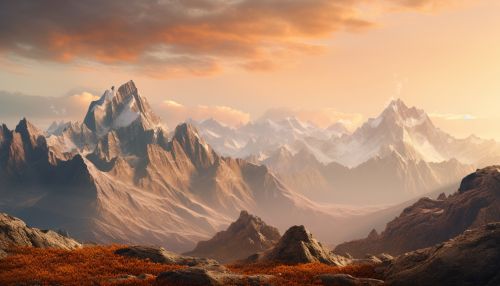Geologys Impact on Landscape Evolution
Introduction
Geology, the study of the Earth's solid substances and the processes by which they change, plays a significant role in the evolution of landscapes. The Earth's surface is a dynamic system, constantly being shaped and reshaped by geological forces. This article delves into the intricate relationship between geology and landscape evolution, providing a comprehensive understanding of the subject.
Geological Processes and Landscape Formation
The Earth's landscape is shaped by various geological processes, including tectonic activity, weathering, erosion, and sedimentation. These processes, which occur over millions of years, contribute to the formation and evolution of the Earth's landscapes.


Tectonic Activity
Tectonic activity refers to the movement and deformation of the Earth's crust due to the motion of the tectonic plates. This process is responsible for the formation of major landforms such as mountains, valleys, and basins. For instance, the Himalayan mountain range was formed as a result of the collision between the Indian and Eurasian tectonic plates.
Weathering
Weathering is the process by which rocks are broken down into smaller particles by physical, chemical, and biological factors. This process plays a crucial role in the formation of soils and the shaping of landscapes. For example, the iconic red rocks of the Grand Canyon are a result of weathering processes.
Erosion
Erosion is the process by which weathered material is transported from one location to another. This process, driven by agents such as water, wind, and ice, significantly alters the Earth's landscapes over time. For instance, the Mississippi River has created a vast delta through the process of erosion and sedimentation.
Sedimentation
Sedimentation is the process by which eroded material is deposited in new locations, forming layers of sediment. Over time, these layers can harden into sedimentary rock, creating new landforms and contributing to landscape evolution.
Geological Time and Landscape Evolution
The concept of geological time is fundamental to understanding landscape evolution. Geological time, which spans billions of years, provides a framework for interpreting the Earth's geological history and the processes that have shaped its landscapes.
Impact of Climate on Landscape Evolution
Climate plays a significant role in landscape evolution, influencing the rate and nature of geological processes. For instance, in regions with a cold climate, glaciation can significantly shape the landscape, creating features such as U-shaped valleys and fjords.
Human Impact on Landscape Evolution
Human activities, such as mining, deforestation, and urbanization, can also influence landscape evolution. These activities can accelerate erosion and sedimentation processes, leading to significant changes in the landscape over a relatively short period of geological time.
Conclusion
In conclusion, geology plays a pivotal role in shaping the Earth's landscapes. Through processes such as tectonic activity, weathering, erosion, and sedimentation, the Earth's surface is constantly evolving, creating the diverse landscapes we see today.
